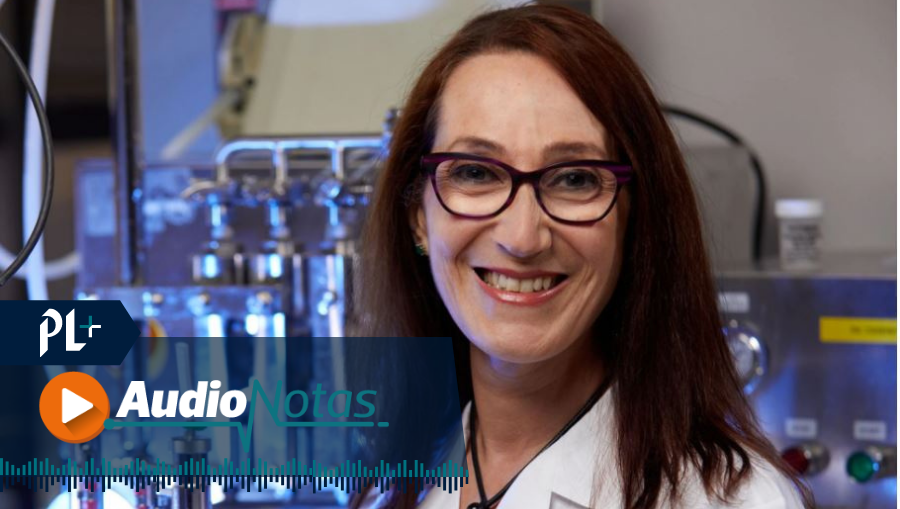The pandemic caused big pharmaceutical companies to accelerate the construction of a vaccine against covid-19. To date there are several brands on the market but its production and formula remains restricted.
But the scientific María Elena Botazzi, a member of the Texas Children’s Hospital, in Houston, United States, created an efficient formula to combat the covid-19 virus and its most aggressive variants such as beta and delta.
Botazzi’s scientific and humanitarian contribution led him to be nominated for the Nobel Peace Prize. The scientist spoke with Prensa Libre and Guatevisión explaining the work that exists behind the formula of her vaccine and gives a regional perspective of how Central Americans have faced the pandemic.
you might be interested
Coronavirus: how the world missed the opportunity to have a vaccine ready to face the pandemic
–
What is a patent-free vaccine and why is it a term that is not usually heard hand in hand with the fight against diseases such as covd-19 today?
We decided that the ideal would be “open science”, publishing, not necessarily linking discoveries to patents in order to have the opportunity to work more openly and allow others to openly replicate our work.
With regard to covid-19, we saw that there was an urgency and an emergency, the fact that at a certain point also We saw inequity not only in the area of access to this type of technology but also in who could produce it, which is why we decided to maintain the same philosophy of our center for the development of our vaccine for covid-19.
You developed a patent-free vaccine to combat covid-19. How long ago did this work begin and why the name “Cobervax”?
We have had a program developing vaccines against coronaviruses for 10 years. Obviously we started with prototypes for the SARS virus and then the MERS.
When at the beginning of 2020 we worked with the fact that it is a new coronavirus, we already had a lot of knowledge, the information was already openly published.
Our first ally in this effort is that we transferred the technology to an Indian company called “Biological E”. and they not only had the option of reading our publications but also wanted to receive our reagents and the seeds to start this development in a more accelerated way due to the fact that it is an emergency.
This vaccine is called Corbevax and it is a vaccine from India, from the company “Biological E”, co-developed by our technology. What it means is “cor” for crown”, “be” for “Biological E” and “vax” for vaccine.
It is the first vaccine that has been authorized using our technology, we are currently making similar alliances in Indonesia, Bangladesh and Africa; they will give it another name but in the end it comes from the discovery of our laboratory.
Is Cobervax efficient for the covid-19 variants that we have seen in recent months?
Two phase three studies found that the vaccine has the potential to be superior to Covishield, the Aztrazeneca vaccine developed in India.
Also the percentages of efficiency to neutralize the original virus is more than 90% and more than 80% for the delta and beta variants, right now we are evaluating the percentage of efficacy against omicron.
How expensive is it to produce this vaccine and is it possible that countries in the region such as Guatemala can produce it?
Vaccines already have economies of scale because they don’t have to build new structures, they don’t have to build new factories, the staff is trained and therefore they cost less than two dollars per dose, they are very feasible that they can also be bought by low-income countries. resources.
In Central America there is currently no capacity already built to produce our own vaccines, but there is a great aspiration that the regions try to create more self-sufficiency.
Guatemala and Central America, if they work together, we could create a biopark or a group of capacities to later be self-sufficient and produce our own vaccines.
Also read: We verify for you: How transparent was Central America in the purchase of vaccines?
Your vaccine seems to be cheaper than those currently on the market. Has Guatemala or any other country in the Central American region been interested in starting to produce it?
I think that a little bit of everyone, starting with the banking groups, we have the Central American Bank for Economic Development, they are always looking at the areas where the bank is going to finance the countries and they have seen that it is important to reinforce not only public health but the health systems, the part also of local production, not only of biologicals but also medicines and material necessary to attend to health.
This type of discussion must be held to involve all the necessary actors: the academic, private, public, financial, ethical…there are many components that must be discussed to change health policies and link them, put them on the table.
Health can improve the economic part of the country and even ensure national security because it ends with repercussions at different levels.
The development of Cobervax, a patent-free vaccine, led to her being nominated for a Nobel Peace Prize. How did she receive that nomination?
Very humble, very grateful. It was a big surprise and I think at the same time It not only highlights our mission and our philosophy for the last 20 years of using the concept of open collaboration, of transparency, it is about uniting countries again so that we can find solutions.
Also the responsibility that visibility brings, is to go ahead and transmit our ideas to address the great global problems in health.
How much pride! María Elena Bottazzi, a Honduran scientist, has been nominated for the Nobel Peace Prize. A Honduran at heart who has dedicated her life to service through science. There is no doubt that this is our moment, the moment of the Honduran woman!
– Xiomara Castro de Zelaya (@XiomaraCastroZ) February 2, 2022
You are a scientist and you have observed how different governments have fought or tried to fight the pandemic. What have the Central American countries done right and what have they done wrong?
I think the list could be a bit long. There are several very general things, recognizing that we are a region and the power is greater if one works as a “regional orchestra”.
Maybe a little more could be done and join effortsFor example, see what Guatemala has and what Honduras does not have, see the benefits of Honduras and link them with Costa Rica, etc.
Fine-tuning strategies and seeing a joint effort gives us the power to create policy guidelines for negotiating with agencies that offer not only money but also access to vaccines.
That concept of nationalization of what I am going to solve first, I think that regionalization would have been a better benefit. As everywhere Nor was there a clear communication strategy to inform our peoples where the truthful information is.
In some countries, mainly in Europe, it seems that the pandemic is already coming to an end because the use of masks is no longer mandatory in some places. Are Guatemala and the other countries in the region close to putting an end to the pandemic?
The fact that there are so many regions that have not yet received access to vaccines is the center where these variants of the virus are being created and although the use of masks is limited in certain places, in the end that is why we have peaks, which is why we continue to have infections and deaths.
I think we still need a little and if we learn from what we haven’t done in the last two years; increase access to vaccines, bringing vaccines like Cobervax, this in the context that we continue working on other parallel avenues such as better public health, better clinical management, better access to supplies.
I think that this year 2022 will still determine how much this virus can be eliminated or if we are going to have to continue with this in 2023 and perhaps beyond 2023.
–


